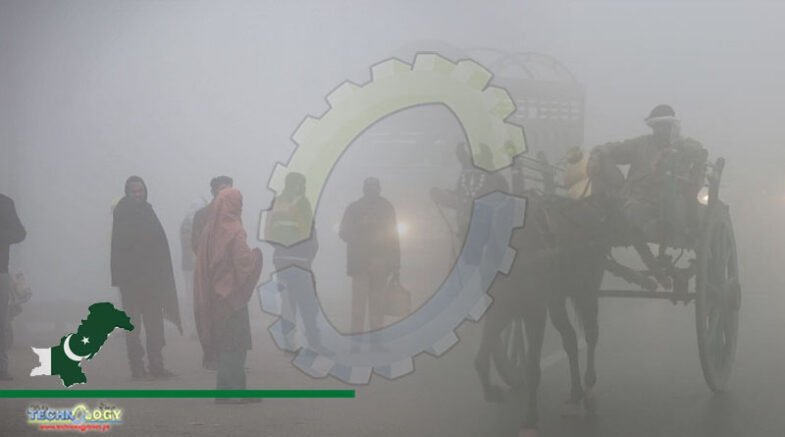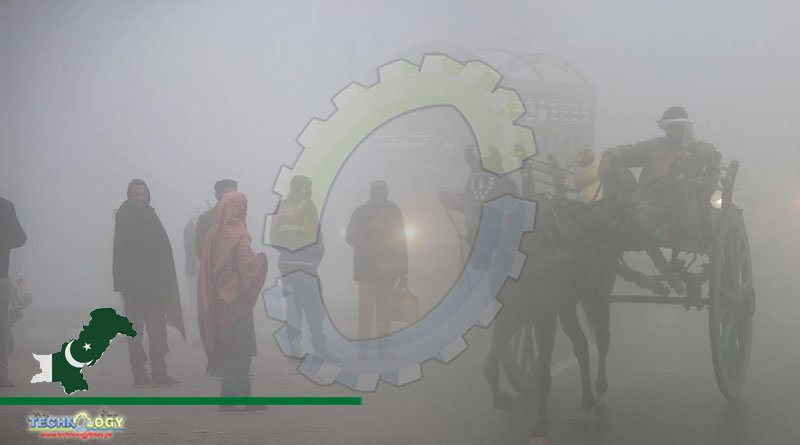According to the study, the South Asia region accounted for approximately 32% of global mortality linked to exceptionally high levels of poor ambient air quality.

South Asian air pollution is a multifaceted issue that cannot be effectively addressed without an open exchange of accurate information and capacity building among all parties.
The South Asian scientific community, which has been hit the hardest by the rising and widespread risk of smog, which causes severe pollution and leads to health crises and socioeconomic issues, has called for a revitalization of the Male Declaration to ensure active regional cooperation in combating the environmental crisis.
A recent study titled “Recurring South Asian Smog Episodes: A Call for Regional Cooperation and Improved Monitoring,” written by over a half-dozen scientists from Pakistan, Bangladesh, India, Japan, the United States, and the United Kingdom, provided the first-ever detailed account of gaps in air pollution monitoring and a lack of tools that can provide real-time data for informed policymaking decisions to contain smog, which has become a serious challenge for the region to overcome.
The first-of-its-kind study, conducted in collaboration with leading international scientific authorities, found that the South Asian region stood out globally for fine particle pollution, which has emerged as a major environmental challenge across South Asian states, affecting human health and causing severe socioeconomic disruptions.
According to the study, the region accounted for approximately 32% of global mortality linked to exceptionally high levels of poor ambient air quality.
It went on to say that air pollution had reduced average life expectancy in the region by about five years in four South Asian countries, namely Bangladesh, India, Nepal, and Pakistan, which account for 60% of global life-year losses.
The regional economies’ Gross Domestic Product (GDP) and several of its percentages were also declining due to additional health, agricultural productivity, mobility, and other effects of air pollution.
The aforementioned countries share the Indo-Gangetic Plain (IGP), which combines population, emissions, and circulation to create a shared air pollution problem that necessitates regional cooperation.
According to the report, the dense cloud of air pollution was visible from October to February. Some referred to this period of smog or smoke activity as the “fifth season” because it occurred on a regular basis throughout the region.
It also calls into question whether some of the region’s government-level measures to combat smoke are beneficial or fruitful, such as the practise of closing educational institutions and implementing road rationing during intense smog and smoke episodes, as well as warning the public to limit outdoor activities.
The pollution crisis became complicated as a result of numerous key structural flaws, such as a lack of suitable infrastructure and a disparate approach to regulation and enforcement across these countries. The study’s findings revealed that impediments to dialogue and effective action between countries were also caused by an imbalance in air quality monitoring across the region.
It also emphasises that improved monitoring of fine particle pollution, particularly particulate matter with diameters of 2. 5 m (microns) or less (PM2.5), is a major concern as a source of poor air quality throughout the region.
Furthermore, it stated that persistent data availability on PM2.5 was recently made available for selected locations throughout South Asia as part of the AirNow Department of State programme, which has placed monitors at US embassies and consulates.
Due to similarities in the monitoring method and the shared data quality assurance programme, the study also used data from AirNow to demonstrate spatial and temporal trends across the IGP for three transboundary city pairs: Lahore-Delhi in the west, Lukhnow-Dang in the centre, and Kolkata-Dhaka in the east.
The seasonal variability and degree of poor air quality as defined by PM2. 5 were similar in Lahore and Delhi, while the Punjab-EPD guideline for daily average PM2. 5 (35 g/m3) was also used as a reference to emphasise the extreme pollution levels routinely encountered.
“Without appropriate regional monitoring, targeted transnational action cannot be implemented efficiently.” The study also discovered that the colder temperatures traditionally resulted in increased residential biomass or solid waste burning for heating.
As previously stated, Lahore and Delhi (located in the west) have an extended pollution season that begins in October or November with the annual burning of agricultural residues. The central cities also show evidence of pollution impacts that start during the fire season, but pollution during this early period does not stand out in magnitude.
There are currently no official air quality monitoring stations in Pakistan or Bangladesh. Efforts were being made, however, to introduce low-cost sensor networks for particulate matter into these countries and throughout South Asia in general.
“India currently has over 370 air quality monitoring stations that measure both particulate and gaseous pollutants. There are fewer than ten particulate matter measurement sites in Nepal, with fewer than ten of the 27 sites routinely reporting data.”
As a result of this disparity among South Asian states, it is difficult to assess the effectiveness of the countries’ air quality conservation strategies as well as persuade the governments of any one nation to participate in regional cooperation initiatives.
The refusal of the Indian chief minister to participate in recent regional cooperation initiatives initiated by the Pakistan Punjab Chief Minister is a clear manifestation of this imbalance.
As a result, the most important step for Pakistan and other South Asian countries is to develop and strengthen their monitoring infrastructure in order to compensate for this monitoring imbalance and foster goodwill among their citizens and neighbours across borders.
The Malé Declaration is a South Asian regional cooperation framework established to address the issue of air pollution (SACEP). It has correctly stated the need for regional cooperation and the management of transboundary air pollution since 1998.
The most important step for South Asian countries is to develop and strengthen their monitoring and reporting infrastructure in order to compensate for monitoring imbalances and boost goodwill within and across borders.
The study concludes on a high note, stating that there is a strategic and urgent need for the expansion of routine air quality monitoring networks throughout South Asia.
South Asian partners have identified several constraints, including limited observations, technical capacity, and financial resources, but they have demonstrated a strong commitment to combating pollution issues, particularly seasonal smog.
The study’s authors include the NUST Institute of Environmental Sciences and Engineering (IESE), the School of Civil and Environmental Engineering (SCEE), Dr. Muhammad Fahim Khokhar and M. Shehzaib Anjum from the Department of Chemistry at the University of Dhaka in Dhaka, Bangladesh, and Abdus Salam from the Department of Chemistry at the University of Dhaka in Dhaka, Bangladesh. Vinayak Sinha of the Indian Institute of Science Education and Research, Mohali, India, and Manish Naja of the Aryabhatta Research Institute for Observational Sciences (ARIES), Nainital, India; Manora Peak Kirpa Ram of the Banaras Hindu University Institute of Environment and Sustainable Development in Varanasi, India; Hiroshi Tanimoto of the National Institute for Environmental Studies in Tsukuba, Japan; James H. Crawford of NASA Langley Research Center in Hampton, Virginia, USA; and Mohammed I. Mead of the MRC Centre for Environment and Health, Environmental Research Group, Imperial College London, UK.
